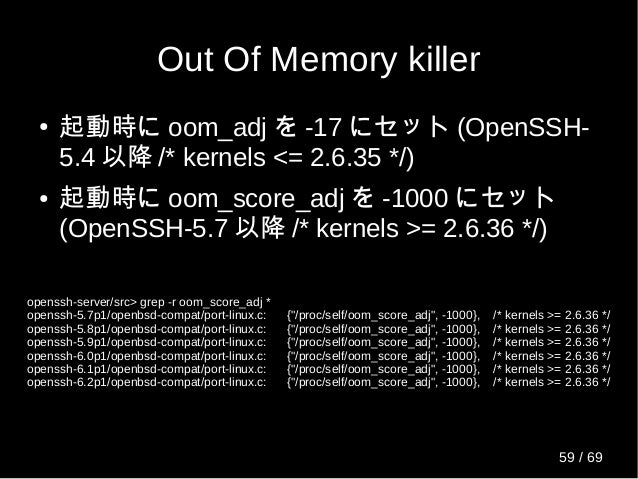To set the default command shell, first confirm that the OpenSSH installation folder is on the system path. For Windows, the default installation folder is SystemDrive:WindowsDirectory System32 openssh. The following commands shows the current path setting, and add the default OpenSSH installation folder to it. Sftp.exe is the service that provides the Secure File Transfer Protocol, and runs over SSH scp.exe is a file copy utility that runs on SSH Documentation in this section focuses on how OpenSSH is used on Windows, including installation, and Windows-specific configuration and use cases. Parameter ChrootDirectory in /etc/ssh/sshdconfig allows the specification of a chroot target directory which will then be used for all ssh and sftp sessions to this server. The target directory definition can utilize the%u and%h tokens to customize the target directory based on the username or the users home directory.
There are different ways to lock a user into his home directory. Hst high soft driver download for windows. A very special case is to grant sftp-only access, which does not require a full chroot jail to be set up. The sftp subsystem built into openssh allows a simple setup of a user locked into his home directory.
Configure OpenSSH
There are two ways to configure OpenSSH. Individual users can be configured in openssh or (my preferred solution) a group can be created and configured in OpenSSH. This group can then be assigned to the users who should be restricted to sftp only. Edit the /etc/ssh/sshd_config file and include the following section at the end of the file.
The above configuration section (the “Match” block) must be the last configuration item in the config file. Any configuration following a Match block overrides the general settings when the Match conditions are met. In the above example, the two configuration items are only used when the user is part of the “sftponly” user group. The “ChrootDirectory” locks the user into the directory specified as argument. The “%h” represents the user’s home directory, allowing the match pattern to lock each user into his own home directory. The “ForceCommand” ensures that the user cannot trigger any other command, but only enter the “internal-sftp” subsystem.
It is also necessary to configure the sftp subsystem to use “internal-sftp”. Also in the /etc/ssh/sshd_config ensure the following configuration is set. Otherwise the external sftp-server will be used, which can not be found inside the chroot jail of the user.
The configured group needs to exist on the system to assign it to the sftp users. The following command will create this group.
Finally the ssh daemon needs to be restarted to load the new configuration.
Further restricting the account
To ensure the sftp only user is only allowed to use sftp, additional restrictions can be added to the match block.
Some of the most common restrictions are shown in the example above.
AllowTcpForwarding – Deny TCP forwarding which can be used to forward certain ports
PasswordAuthentication – Disable password authentication. The user can only authenticate with any remaining methods, like ssh-keys.
X11Forwarding – Deny X11 forwarding to protect any X11 interaction to the server.
Choose the settings for further restriction of the account based on your needs. In some cases, disabling Password authentication might be required to be disabled.
Preparing the Account
A new sftp only account can now be created and prepared. As described above, the user needs to be assigned to the group used in the Match block.

The “-G” option adds “sftponly” as a supplementary group to the user “user1”. With the “-s” option, the user gets “/sbin/nologin” as shell which denies interactive shell access for the user. This command will automatically (if not instructed otherwise with additional arguments) create a home directory for the user. The permissions of the home directory need to be modified for the chroot jail to work.
The user “root” needs to be set as the owner of the home directory. The group should remain the primary group of the user as the user needs to access the directory. The permission set with the following command should ensure the user “user1” can access the home directory.
Do not set the group’s write permission as it will be checked by ssh during login. The ssh daemon will refuse login attempts with the following error if the write permission is granted.
The permission can either be granted by just adding the read and execute permission to the group as shown in the above command or numerically as “0750” setting implicit permission for user, group and other.
Limitations of this setup
This specific setup has one drawback caused by the fact that the user’s home directory owner is root. The user itself has no write permission to his home directory. So the user can not create new directories or files directly directly in the home directory. Above, the owner of the home directory was set to root to allow the chroot jail to work. That change prevents the user from writing directly into the home directory. Granting the user’s group write permission to the home directory will not be possible.
To allow the user to upload content via sftp, a subdirectory should be created for this purpose. The created directory’s owner will be the user, allowing him to manage files and directories within the subdirectory freely.
The above example creates a directory called “data” in the user’s home directory and changes the owner of it to the user. Now the user can manage data inside this directory. In some web-hosting scenarios the directory is named “public_html”. This allows the user to upload web-content while still being locked into his home directory.
Authorized keys
To be able to configure an authorized key for the user, the “.ssh” directory must be created and changed to the correct owner and permission.

With the .ssh directory prepared and owned by the user, the user can upload his key already by himself as needed. For more details about adding a key, see SSH passwordless login with SSH-key.

Test the configuration
To test the configuration, connect with the sftp command line client as shown below.
Depending on the configuration, you will either see the prompt “sftp>” or, if no ssh-key was yet added, you will be prompted for the password of the user.
Verify that the user is locked inside the home directory by checking the current working directory (command: “pwd”) and the directory content (command: “ls”). The users home directory should be represented by “/” indicating the root directory in which the user is locked in.
Should there be any issues with the connection or the acceptance of the ssh-key, the sftp client allows to pass ssh options using the “-o” option.
The above example will try to connect to the server with the ssh log level set to debug. This will provide more details about problems from the client’s perspective.
On the server the log files will provide information about what went wrong. On RedHat based distributions, the related log is “/var/log/secure”. Even the ssh daemon on the server supports the “LogLevel” setting in the /etc/ssh/sshd_config file.
Read more of my posts on my blog at https://blog.tinned-software.net/.
Related posts:

Using OpenSSH you can bind SSH or SFTP users to their home directory and restrict them to access other directories on the SSH server. In this article we will demonstrate Chroot SSH Configuration on Linux|RHEL|CentOS for selected ssh users or group.
Topic
How to configure chroot SSH on Linux?
How to configure chroot SSH on CentOS 7?
How to configure chroot SSH on RHEL 7?
Restrict SSH user to a specific directory
Restrict SSH user to home directory
Chroot SSH on Ubuntu
Chroot SSH on Debian
Chroot SSH on RHEL
Solution
Prerequisites
- Install Openssh server
Configuration
Setting up a secure or chroot ssh environment requires a sandox environment which has its own libraries and binaries. In this article, we’ll bind all ssh users who are part of chrootssh group into /data/chroot-ssh directory.
There are 3 configuration steps used in this article to setup chroot SSH environment:
- Chroot Environment Setup
- Chroot Binary Setup
- Chroot User Account Setup
This article has been tested on CentOS 7 and RHEL 7. You can refer to the steps given in this article to configure chroot ssh on other Linux distributions. This article also contains 3 bash scripts to automate the setup. Login to the system with root account to perform the given steps.
Chroot Environment Setup [1]
- Create a chroot environment directory named
/data/chroot-ssh. You can create the chroot environment directory on any path of your choice.
- Create a chroot group named chrootssh. You can create the chroot group of your choice.
- Setup chroot environment with the following steps.
- Append the following configuration to
/etc/ssh/sshd_configfile and then restart sshd service.
Linux Chroot Sftp
- We can automate the complete above steps given in Chroot Environment Setup section with the following bash script.
- The above script needs two arguments 1) Chroot Directory path 2) Chroot Group Name.
- Execute the following command to run the above script. Relace the directory path and group name of your choice.
Chroot Binary Setup [2]
In this section, we’ll setup required binaries for chroot sandbox environment. Binaries are the commands allowed to execute in the chroot environment. Basically, we need the following mandatory commands or binaries for chroot environment but you can setup other commands if required.

- Then copy dependent library files of those binaries/commands to
$CHROOT_DIR/lib64directory.
- Copy the following special binary file to
$CHROOT_DIR/lib64directory.
- We can automate the complete above steps in Chroot Binary Setup section with the following bash script.
- The above script needs two arguments 1) Chroot Directory path 2) absolute path of the binary or command.
- Execute the following command to run the above script. Replace the directory path and binary name of your choice.
Chroot User Account Setup [3]
In this section, we’ll setup user accounts with chroot privileges only. For exercise, we’ll use testssh account for chroot ssh login.
- Create user account and add the user to chroot group chrootssh.
- Setup home directory for the chroot user account with the following steps.
- We can automate the complete above steps in Chroot User Account Setup section with the following bash script. In the following script modify two variables 1) CHROOT_DIR 2) CHGROUP and put the value of your choice. In our case,
CHROOT_DIR='/data/chroot-ssh'andCHGROUP='chrootssh'.
- The above script needs one argument
user_name. - Execute the following command to run the above script. Relace the user_name of your choice.
Testing
Execute the following commands for chroot ssh login test.
Ssh Chroot
Openssh Sftp Chroot User
If you have enjoyed the above article, the following are add on articles related to Chroot SSH Configuration on Linux|RHEL|CentOS:
Chroot Jail Ssh

